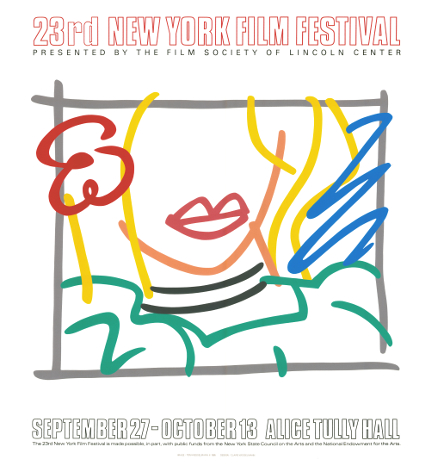Artists' posters
From Toulouse-Lautrec to Jeff Koons
(03 October 2015 - 21 February 2016)23rd New York Film Festival, 1985
© Tom Wesselmann, VEGAP, Málaga, 2015
23rd New York Film Festival 1985
© Tom Wesselmann, VEGAP, Málaga, 2015At the end of the nineteenth century the boundaries and hierarchy between the various artistic disciplines began to fade. Prominent painters became very interested in and experimented with the graphic arts, and this in turn helped professional illustrators and poster designers achieve recognition as artists. Improvements and innovations in printing and printmaking techniques, coupled with the ever-increasing speed and quality of reproduction procedures and the widespread use of advertising as a substantial part of economic, social and cultural activity expanded the limits of graphic illustration. Hitherto confined to books and periodical publications, it now colonised city streets in the form of attractive publicity posters, turning them into spectacular art galleries.
Following the emergence of the early twentieth-century avant-garde movements, which shunned traditional concepts of art, and the development of the consumer society, the poster became established as a transforming means of mass communication in which many creators from various artistic fields experimented with techniques and themes.
Attracted by its expressive potential, its great powers of persuasion and its visual impact, many foremost international masters placed their inventiveness and oeuvre at the service of advertising and propaganda, either occasionally or continuously, to publicise events and products of all kinds through cultural, playful, commercial and ideological messages, as required. And thanks to those posters, they found a way of disseminating and popularising their pictorial languages, in some cases worldwide.
The significant group of artists’ posters from the Joseluis Rupérez collection brought together by the Museo Carmen Thyssen in this exhibition partly documents the origins and presence of artistic languages in the modern poster. Above all, it shows the fascination the poster has held for prominent contemporary artists as a graphic medium which, now largely relieved of its commercial obligations, continues to stand out on today’s visual culture scene.
